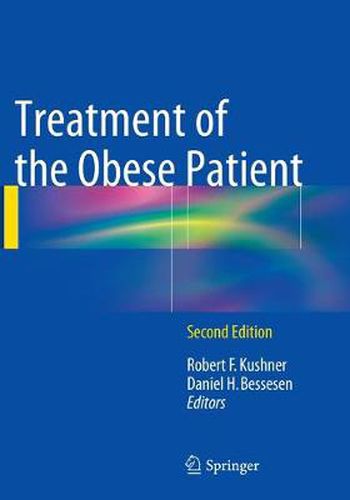Readings Newsletter
Become a Readings Member to make your shopping experience even easier.
Sign in or sign up for free!
You’re not far away from qualifying for FREE standard shipping within Australia
You’ve qualified for FREE standard shipping within Australia
The cart is loading…






This title is printed to order. This book may have been self-published. If so, we cannot guarantee the quality of the content. In the main most books will have gone through the editing process however some may not. We therefore suggest that you be aware of this before ordering this book. If in doubt check either the author or publisher’s details as we are unable to accept any returns unless they are faulty. Please contact us if you have any questions.
This is a timely and informative updated edition for all health care providers challenged with helping patients manage weight. Similar to the well-reviewed first edition, this updated title is directed toward individuals who wish to read further about targeted topics, rather than find an introduction to the field. This second edition again provides insights into recent scientific advances in obesity research and provides the most up-to-date instruction about current treatment issues and strategies for both adults and children. While several of the chapters are no longer relevant from the first edition, other topics have emerged as interesting and current. This edition will keep the two-section format of Physiology and Pathophysiology and Clinical Management, but it increases the first section to 10 chapters and reduces the second section to 12 chapters. The plan is to keep this edition in the range of about 350 to 400, maximum, printed pages. The volume is again divided into two parts. Part 1 covers new discoveries in the physiological control of body weight, as well as the pathophysiology of obesity. Expert authors discuss pathways that control food intake, energy expenditure and peripheral nutrient metabolism, including a look at the emerging evidence of the role of adipose tissue as an endocrine organ. Part 2 covers all the key issues central to clinical management, including recent developments in the epidemiology of obesity, assessment of the obese patient, behavioral strategies in weight management, dietary modification as a weight management strategy, physical activity as a weight management strategy, weight loss drugs, surgical approaches to obesity and other important clinical topics. An essential, practical text that sorts, synthesizes and interprets the latest information on obesity-related topics, this second edition will be an essential resource for clinical endocrinologists and other health care providers across a broad spectrum of specialties.
$9.00 standard shipping within Australia
FREE standard shipping within Australia for orders over $100.00
Express & International shipping calculated at checkout
This title is printed to order. This book may have been self-published. If so, we cannot guarantee the quality of the content. In the main most books will have gone through the editing process however some may not. We therefore suggest that you be aware of this before ordering this book. If in doubt check either the author or publisher’s details as we are unable to accept any returns unless they are faulty. Please contact us if you have any questions.
This is a timely and informative updated edition for all health care providers challenged with helping patients manage weight. Similar to the well-reviewed first edition, this updated title is directed toward individuals who wish to read further about targeted topics, rather than find an introduction to the field. This second edition again provides insights into recent scientific advances in obesity research and provides the most up-to-date instruction about current treatment issues and strategies for both adults and children. While several of the chapters are no longer relevant from the first edition, other topics have emerged as interesting and current. This edition will keep the two-section format of Physiology and Pathophysiology and Clinical Management, but it increases the first section to 10 chapters and reduces the second section to 12 chapters. The plan is to keep this edition in the range of about 350 to 400, maximum, printed pages. The volume is again divided into two parts. Part 1 covers new discoveries in the physiological control of body weight, as well as the pathophysiology of obesity. Expert authors discuss pathways that control food intake, energy expenditure and peripheral nutrient metabolism, including a look at the emerging evidence of the role of adipose tissue as an endocrine organ. Part 2 covers all the key issues central to clinical management, including recent developments in the epidemiology of obesity, assessment of the obese patient, behavioral strategies in weight management, dietary modification as a weight management strategy, physical activity as a weight management strategy, weight loss drugs, surgical approaches to obesity and other important clinical topics. An essential, practical text that sorts, synthesizes and interprets the latest information on obesity-related topics, this second edition will be an essential resource for clinical endocrinologists and other health care providers across a broad spectrum of specialties.